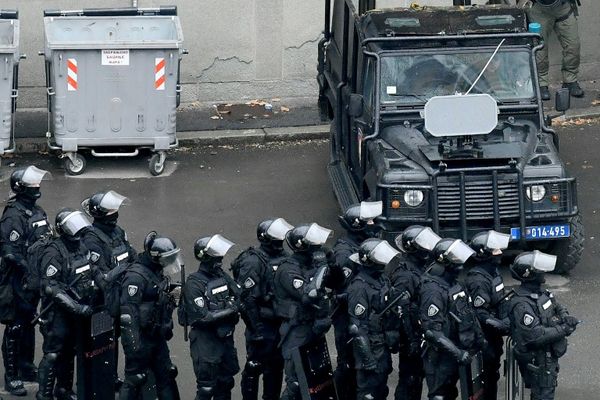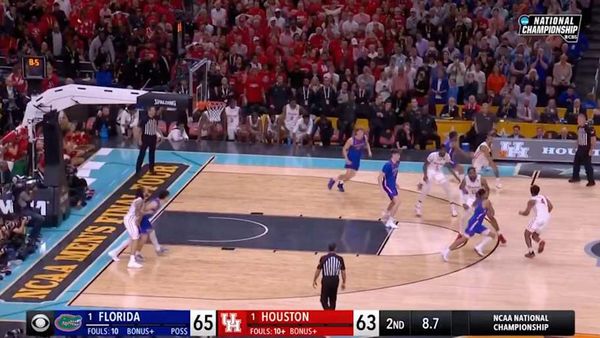The lack of a pass rush and poor coverage in the secondary isn’t a new problem for the Ravens, but an old one.
In fact, about 22 years old.
After Sunday’s 42-38 loss to the Miami Dolphins in which the Ravens allowed four fourth-quarter touchdowns while blowing a 21-point lead, the Ravens looked a lot like the Baltimore team in 1996 that had the sixth-best offense, averaging 23.2 points per game, and the No. 28 ranked defense allowing 27.6.
Back then, the Ravens didn’t have money to go out and sign top free agents, so they used the draft to select and build around players like linebackers Ray Lewis, Jamie Sharper, Peter Boulware and cornerbacks Chris McAlister and Duane Starks, who became the nucleus of a championship-caliber defense in 2000.
What’s their excuse now?
Injuries can be blamed to some degree. The Ravens were without cornerbacks Kyle Fuller, Brandon Stephens and even Marlon Humphrey for most of the second half, but they also got whupped physically.
The secondary was confused and suffered from some miscommunication, which led to breakdowns and eventually touchdowns. The Ravens had only one sack as Miami quarterback Tua Tagovailoa completed 36 of 49 passes for 469 yards and six touchdowns.
Let’s repeat that: Tagovailoa, who has averaged only 6.7 yards per completion throughout his three-year career, engineered touchdown drives of 75, 59, 64 and 68 yards in the fourth quarter.
Those are the kinds of numbers Jacksonville quarterback Mark Brunell used to put up on the Ravens in their first two years in Baltimore with receivers Jimmy Smith and Keenan McCardell.
The Ravens are 1-1 this season but allowed 547 yards of total offense Sunday and 378 last week in a 24-9 win against the New York Jets.
“Yes, that’s the issue,” Ravens coach John Harbaugh said of the miscommunication. “Never did you think we were going to have that many balls thrown over our head. That just can’t happen; that’s not OK. I don’t care who’s back there, what they’re doing. Those plays will cost you a game when you have a lead like that. You can’t have miscommunication; you can’t have a guy running a post behind Cover 3. Those kinds of things can’t happen.”
Some of it was physical, like receiver Tyreek Hill just running past cornerback Marcus Peters for a 48-yard touchdown reception with 7:47 left in the game to bring the Dolphins within one score at 35-28. Hill beat Peters so badly that Tagovailoa basically hung a pass as high as a punt and Peters still couldn’t catch up.
Another Tagovailoa touchdown pass to Hill, this one 60 yards, left rookie cornerback Jalyn Armour-Davis looking at rookie safety Kyle Hamilton wondering where his help was on the back end. This group looked a lot like last year’s, when the Ravens had the worst pass defense in the NFL. Or, worse yet, like the one in 1996.
“There’s a ton of stuff I wish I would have done differently,” said Hamilton, the team’s top pick out of Notre Dame in April’s NFL draft. “First quarter, second quarter, third quarter, fourth quarter. Obviously as you get down to crunch time, you’ve got to home in on what we’ve been practicing.
“I did make mistakes, and that’s on me, and I’ll get it fixed. I’ll work with the guys to work on communication and be better next week.”
The Ravens are going to need a pass rush, too. They played well enough to control and dominate much of the game because Miami’s offense is basically played in a box. For the entire first half, the Dolphins were content to throw passes of 14 yards or less, and most of those were in the middle of the field.
But once Miami fell behind, the Dolphins challenged the Ravens downfield and those black holes in the secondary were glaring, especially without much of a pass rush.
“Yes, it sucks when there were opportunities there, but they had a great game plan, and he played a great football game,” Ravens defensive end Calais Campbell said of Tagovailoa. “This was, I think, Tua’s best game of his career, from what I’ve seen. He was getting his feet set, getting rid of the ball, making quick decisions and got the ball to his playmakers and let them make plays. That’s what the quarterback does, so you have to give him his props.”
That’s the advantage of having speedy receivers, which have given the Ravens defense problems over the last couple of years. Hill had 11 catches for 190 yards and Jaylen Waddle, another speedster, had 11 receptions for 171 yards. Both had two touchdown catches.
Humphrey doesn’t have great speed, which is part of the reason the Ravens moved him to the slot. Peters hasn’t been able to keep up with elite speed receivers for the last three years. And with all the injuries, that leaves the Ravens with only rookie cornerback Damarion Williams, who left Sunday’s game late in the fourth quarter, and Armour-Davis.
They can run, but they can’t hide, not when it comes to coverage. Good offensive coordinators will find them.
“It’s definitely challenging — it’s the National Football League,” Armour-Davis said. “Every day, every weekend is challenging, but it’s definitely not an excuse. That’s why we’re here, why every man is on this roster. We’re here to do a job, and everybody is expected to compete at a high level. So, it’s not an excuse, but live and learn [and] get better as the days go on.”
The Dolphins also exposed another Ravens weakness, but this was on offense. Baltimore still hasn’t established a running game, and that might have helped keep Miami off the field in the fourth quarter.
“We haven’t been able to do that yet. We’re not there yet; we’re not blocking like we need to,” Harbaugh said.
But other things have become priorities as well, like fixing the pass defense and pass rush. In 1996, the Ravens finished 4-12 in their first year in Baltimore. Are we actually seeing a repeat?
“It’s going to be one of the biggest comebacks probably in the history of the National Football League, and we’ll give them credit for it,” Harbaugh said. “We have to own it, every single person. I told the guys in the locker room, ‘How we respond to this, that will be the story.’ We have a 17-game season, this is the second week of the season. What we do from here on out, everyone is taking a hard look at what we did; coaches, players, everyone.”







